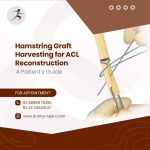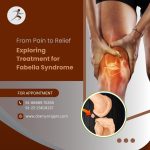A partial knee replacement is not a substitute to total knee replacement . This surgery can be done when the damage is limited to a particular compartment of the knee.
In the past, partial knee replacement was reserved for elder patients who were involved in limited activities. Now, partial knee replacement is frequently preferred in the younger people as their recovery is faster and habitually with much less pain. About 7% to 9% of patients with arthritis in knee are projected to be suitable for partial knee replacement.
How common is knee osteoarthritis?
Up to 35% of the population is estimated to have knee osteoarthritis. Until age between 45- 50, knee osteoarthritis is correspondingly common in both men and women. After age 50, more women are affected.
What is osteoarthritis?
Osteoarthritis is the tiring away of the connective tissue called “Articular cartilage” within the joint. Articular cartilage averts one bone from scratching against another. The cartilage plays the role of a shock absorber in the joint and allows for even and stable movement within the joint. When the cartilage thins, the joint can aggravate and you may feel pain and rigorousness in the joint. Your range of motion may be restricted.
What are the benefits of partial knee replacement over total knee replacement?
As compared to total knee replacement, partial knee replacement better preserves array of motion and knee function as it preserves soft tissues, ligaments and bone in the knee. For these reasons, patients are likely to be more pleased with partial knee replacement as compared with total knee replacement. They are still aspirants for total knee replacement should they ever need it in the future.There is also a reduced amount of blood loss during operation, and knee motion and knee joint pain recovers quicker with Partial Knee Replacement.
What is recovery like?
You can start moving the knee the day after Partial Knee Replacement Surgery. Your knee function should return quickly and with less pain as compared with total knee replacement. You will have to work with a physical therapist to activate the knee while you are in the hospital and for two to five weeks after discharge. You are generally discharged no later than one or two days after operation.You will need treatment to safeguard against formation of a blood clot while in the sickbay and perhaps for a period of time after you are discharged.If all goes fine, you should be back to full action in about 7-9 weeks. Impact exercises or jogging may not be suggested because the replacement includes a bearing surface that can wear.
What are the risks involved?
- An infection at the operating site might be possible. Blood clots are a threat as are injuries to a blood vessel or a nerve. These impediments are quite occasional.
- You may experience some knee joint painfulness.
- Late complications may include contagion and a failure, loosening, or displacement of the prosthesis as well as continued pain.
Which patients are eligible for partial knee replacement?
Patients with medial, or lateral knee osteoarthritis can be considered for partial knee replacement. “Medial” actually refers to the inside section of the joint, which is the section close the opposite knee, while “lateral” refers to the external section farthest from the reverse knee. Medial knee joint degeneration is the most common defect of arthritis.
Other factors to consider:
- In the past, a Partial Knee Replacement Surgery was considered only in elder patients than 60 years who were inactive but younger and more active patients are increasingly being considered.
- You may want to consider a knee replacement if your knee aching persists in spite of your taking anti-inflammatory medications and maintaining a healthy weight.
- Your doctor will ask you to detect the area of pain in your knee, and then study your range of motion and the knee’s steadiness. An X-ray of the knee will define your aptness for Partial Knee Replacement Surgery. However, your Knee Specialist in Mumbai (who are considered to be the best in India) may not know for certain if you are a good candidate until the operation has begun.
- You must have an intact anterior cruciate ligament, an adequate range of knee motion, damage to only one section, and a steady knee. The angulation of the deformity is also considered.




